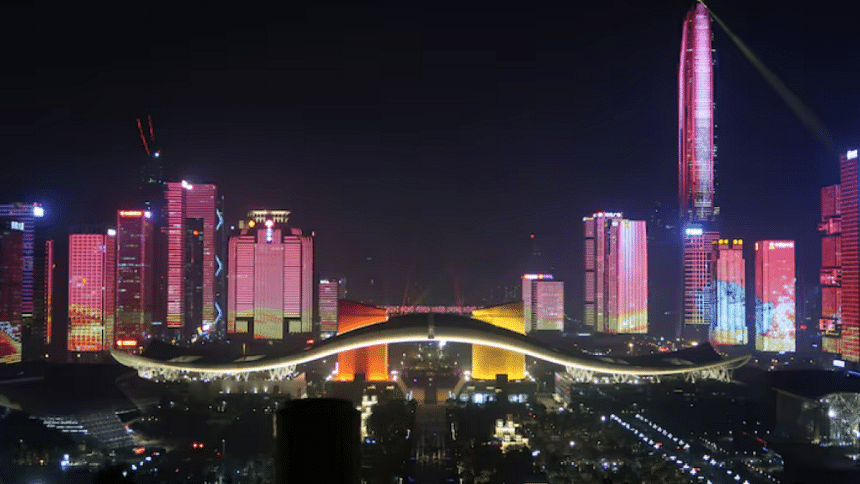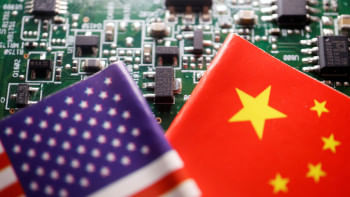Why we need to learn from the Shenzhen innovation model

You are walking down a hustling alleyway in Shenzhen, China's innovation hotspot in the south, just across Hong Kong. In Cantonese cuisine, dominant in this city, seafood hot pot is a luxurious and delicious dish with over 20 soup-base options. You can select your favourite seafood ingredients, like fish, shrimp or oysters, to customise your hot pot experience. Something quite similar goes with Shenzhen's innovation ecosystem.
The city's air hums with a different energy—not the sleek quiet of tech parks but a vibrant, bustling hum. Steaming tea scents the air, and voices rise and fall around low tables. Bent over workbenches, hands move with practised speed, soldering and assembling. Then, children burst in and drop school bags to join their parents in serving the incessant customer flow with food and drinks. All these make you salivate, but you also feel a different kind of innovation pulse.
You have come to this place seeking something Silicon Valley, for all its fame, didn't fully offer: a place where hardware ideas could become real, fast and affordable. Your idea is to make a smart gadget. You need speed, efficiency, and a deep understanding of manufacturing. Silicon Valley, the iconic hub, was the first thought. But high costs, long timelines, and a software-heavy focus made you hesitant. You need hardware expertise, agility, and a place where making things, not just coding them, is the priority. That's what has drawn you to this city that works with mind-boggling efficiency. What you have found is more than just factories; it is a unique innovation ecosystem, the "Shenzhen model," challenging Silicon Valley's dominance in ways the world must understand.
Shenzhen's rise is a modern miracle. From a small fishing village designated China's first Special Economic Zone (SEZ) in 1979 to a massive city today, it transformed at lightning speed. Initially, it was the world's factory floor, efficient and cheap, focused on processing and assembly for foreign companies. But within that intense manufacturing environment, something unexpected happened. Unlike Silicon Valley, which grew from universities and research, Shenzhen's innovation became market-driven and pragmatic. By the late 1990s, Chinese companies, leveraging the now massive manufacturing base, started creating their own products and brands. The Shenzhen model started taking shape.
The secret? Shenzhen's incredible ecosystem. Imagine a city as a giant, interconnected lab. Everything you need to create a product is within easy reach. Electronic parts? Huaqiangbei, the world's biggest market for such things, is minutes away, offering endless components at wholesale prices. Prototypes? Workshops and factories are ready to create them in days, even hours, with breathtaking speed and efficiency.
Silicon Valley, in comparison, excels at deep tech and groundbreaking ideas, often from university labs. Venture capital fuels long-term, ambitious projects, focusing on disruptive, often software-based innovation. This has led to world-changing technologies, but it can be slower, pricier, and less suited for rapid hardware iteration and market shifts.
What are the reasons behind the Shenzhen model's runaway success? First, the lightning speed and agility. Design, manufacturing, and supply chains are all close. Products iterate and launch in months, not years, which is vital in today's fast-paced world. Second, it's a cost-effective powerhouse. A dense ecosystem and fierce competition drive costs down. Affordable parts and production make access to technology easy. Third, the innovation model is market-driven. It focuses on market needs and adapts quickly to solve problems. Pragmatism and market-readiness get priority over pure research. Fourth, it has the manufacturing muscle to provide unmatched production and scaling expertise.
Look at DJI, the global drone market leader. Shenzhen ecosystem enables rapid iteration, beating its competitors. BYD uses Shenzhen for supply chain control and tech integration. Huawei and Xiaomi benefit from Shenzhen's base and spread to the rest of China and the world.
The Shenzhen model inspires cities across China, like Hangzhou and Guangzhou, to build similar ecosystems. "Made in China 2025" aims to spread this model nationally for global innovation leadership.
However, Silicon Valley remains vital for deep tech breakthroughs. Shenzhen provides a complementary, increasingly important innovation path, especially for fast, affordable, and market-relevant tech. It proves innovation thrives in different forms. Understanding Shenzhen's approach is crucial for nations seeking tech and economic leadership.
The story isn't a simple race with a clear winner. Silicon Valley's strength in fundamental research and software remains unmatched. Shenzhen's model, while incredibly efficient for hardware and market-driven innovation, is still evolving. Perhaps the future of innovation isn't about choosing one model over the other, but understanding how they complement each other. Maybe the most innovative path forward involves blending the deep-tech ambition of Silicon Valley with the pragmatic speed and efficiency of Shenzhen. The world might need both valleys and something entirely new inspired by their contrasting strengths to unlock the next era of technological progress.
Dr Sayeed Ahmed is a consulting engineer and the CEO of Bayside Analytix, a technology-focused strategy and management consulting organisation.
Views expressed in this article are the author's own.
Follow The Daily Star Opinion on Facebook for the latest opinions, commentaries, and analyses by experts and professionals. To contribute your article or letter to The Daily Star Opinion, see our submission guidelines.

 For all latest news, follow The Daily Star's Google News channel.
For all latest news, follow The Daily Star's Google News channel. 











Comments